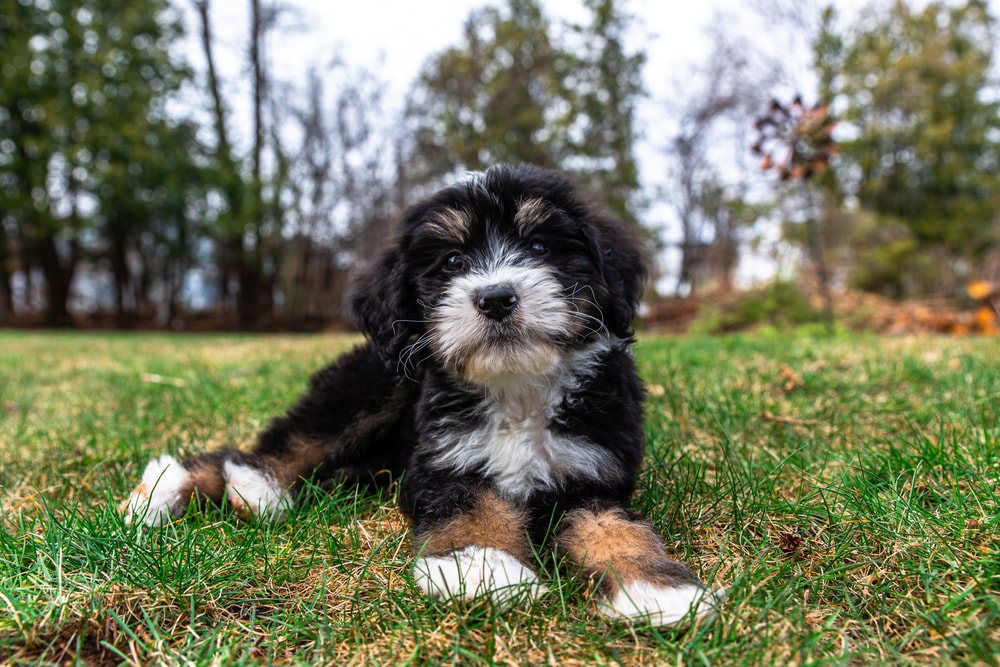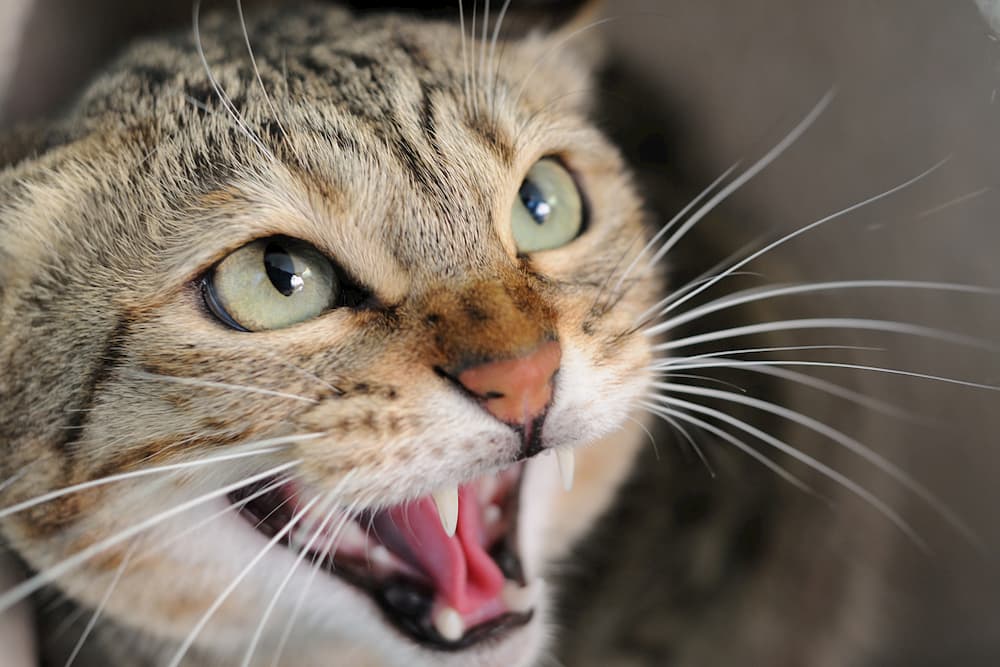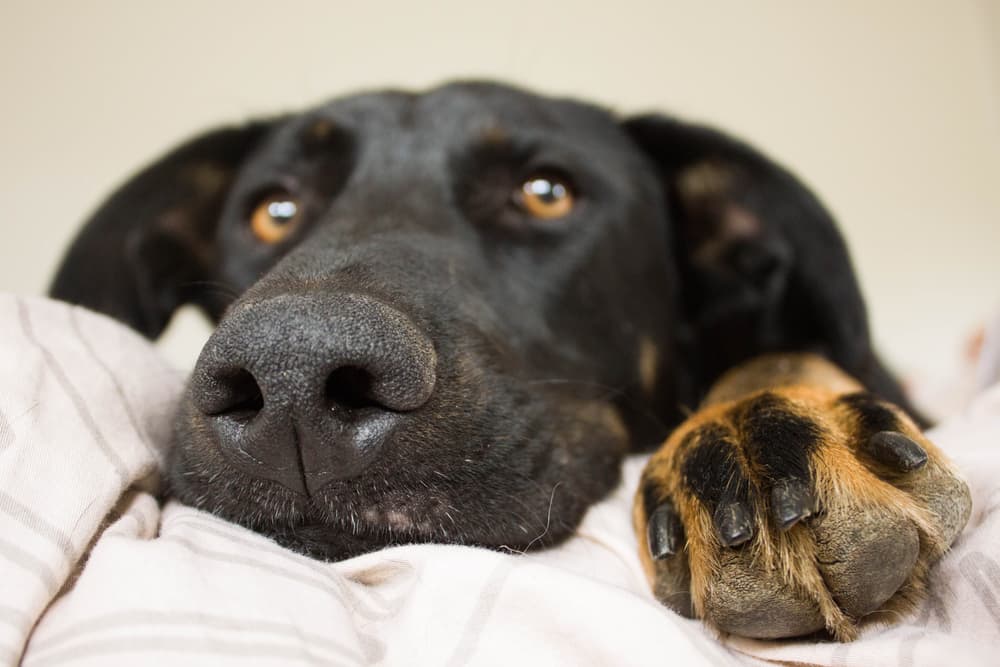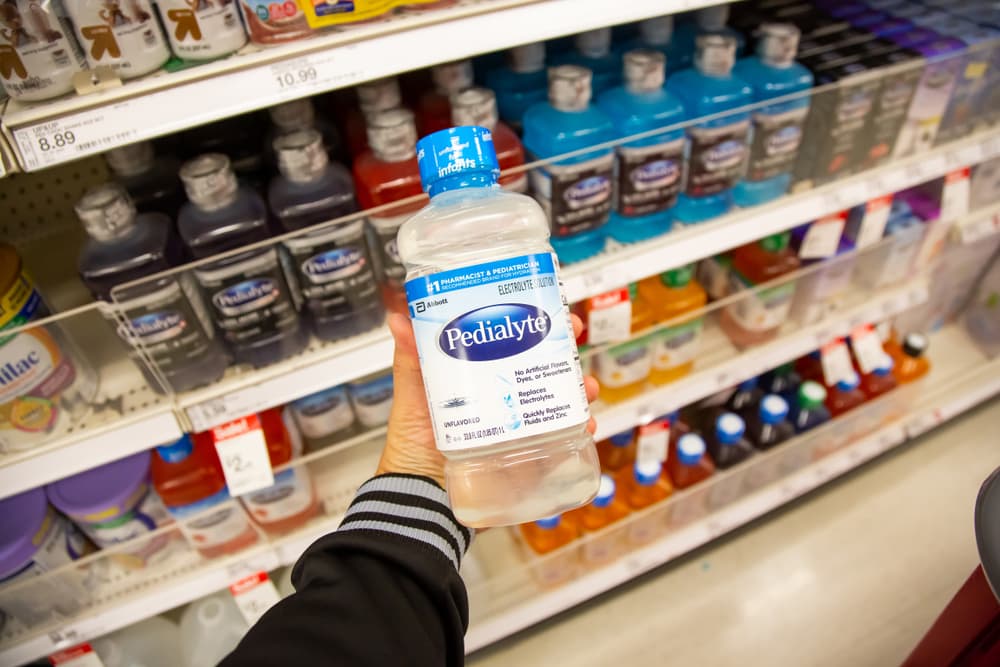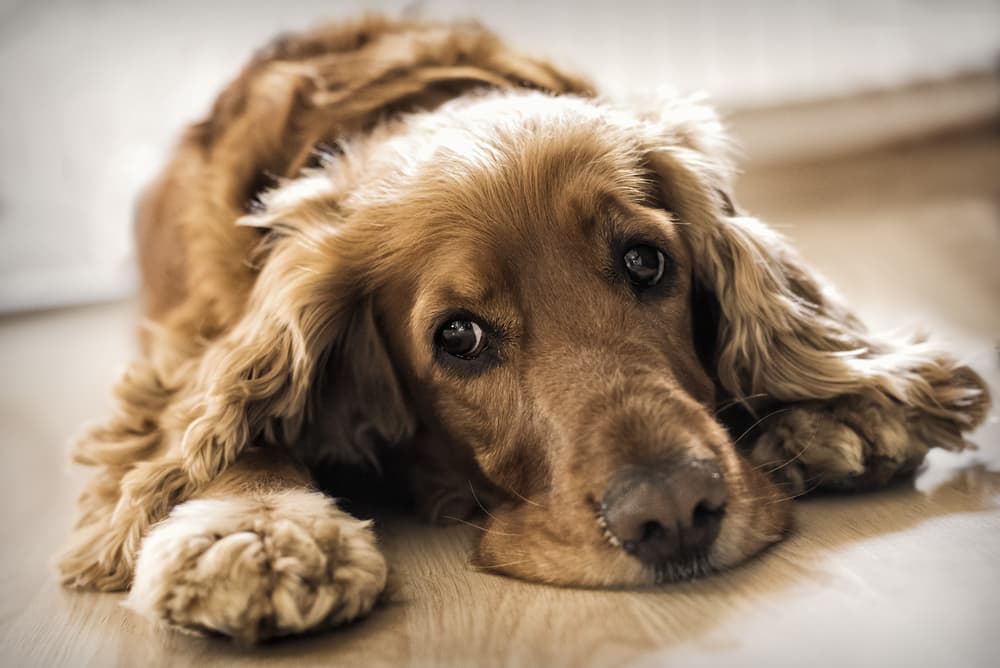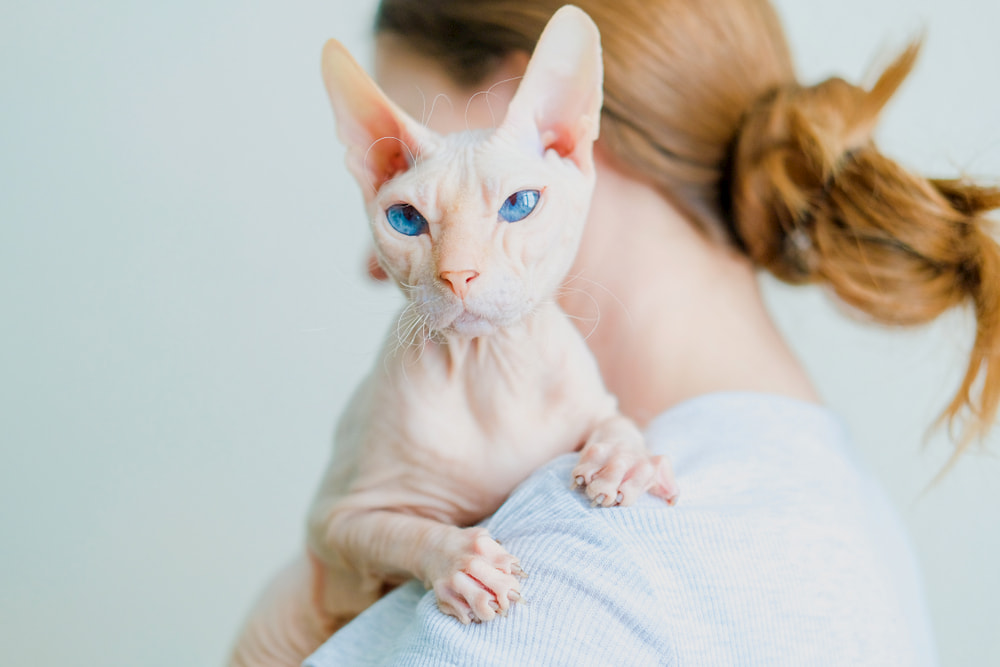Dog Eye Boogers: Why They Happen
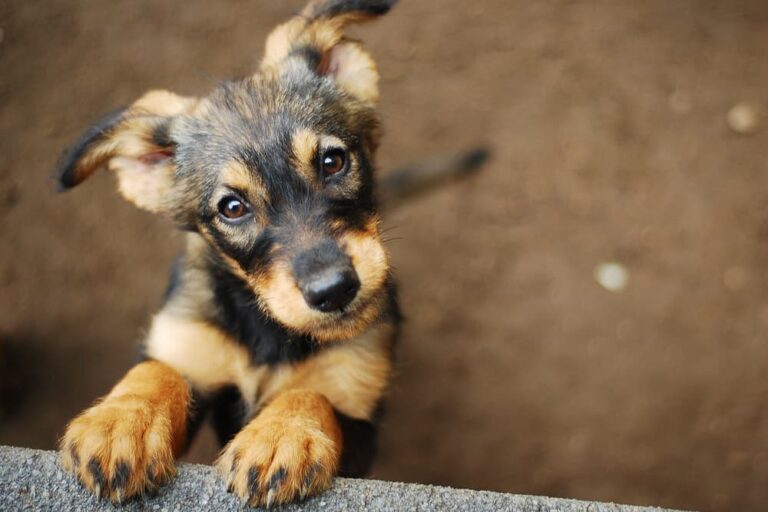
Overview
- Normal dog eye discharge is usually white to grey and consists of mucus and trapped debris.
- A small amount of eye discharge in the morning is normal, but abnormal discharge needs to be evaluated.
- Discharge that’s excessive or a different color may signify an underlying health issue.
- Treatment for abnormal eye discharge can be drops, antibiotics, dry eye medications, or even surgery.
- Keeping your dog clean and the hair around the eyes groomed is the best way to prevent debris.
Dog eyes function much like ours and are subject to many of the same vision issues, including dry eye, infections, and inflammation. Another condition that dogs have in common with us is eye discharge—sometimes referred to as dog eye boogers.
Some eye discharge is normal, but what if your dog has a lot of eye boogers?
Our guide is designed to help you understand more about those unsightly eye boogers including what they are, what causes them, and how to clean and prevent them. As a reminder, any discussion about your dog’s vision should always begin with your veterinarian.
What Are Dog Eye Boogers?

Dog eye boogers are the accumulation of dried tears and particles of debris like pollen and dust. Tears—which are made of fats, a water component, and mucus—play an essential role in canine vision health.
“The tear glands create tears constantly throughout the day to keep the surface of the cornea and conjunctiva lubricated, which is important for eye health and to help flush out any debris,” explains Dr. Diana Pate, a board-certified veterinary ophthalmologist with Upstate Vet Emergency and Specialty Care in Greenville, South Carolina and Asheville, North Carolina.
While water can easily drain down tear ducts (nasolacrimal ducts) into the nose, mucus and debris are too thick, says Dr. Terri Baldwin, a board-certified veterinary ophthalmologist with BluePearl Specialty and Emergency Pet Hospital in Tampa, Florida. Instead, the discharge—what we sometimes call dog eye boogers—accumulates on the inner corner of the eye.
Veterinarians refer to this buildup as ocular discharge or eye discharge, but terminology can vary. “I tend to refer to it as crusting/discharge,” says Dr. Karen Brantman, a board-certified veterinary ophthalmologist with Northwest Animal Eye Specialists in the Seattle, Washington area.
Types of Dog Eye Boogers

Normal dog eye discharge is usually white to grey and consists of mucus and trapped debris. “It usually accumulates most in the morning because as dogs sleep, the mucous doesn’t get wiped away,” says Baldwin.
Discharge that’s excessive or a different color may signify an underlying health issue. “Excessive amounts where the eyes must be cleaned multiple times daily, or green/yellow discharge is likely not normal, and indicates that some form of treatment is needed,” says Brantman.
Here’s a closer look at the different types of eye discharge that may indicate a health issue.
Excessive Eye Boogers
It appears as tear staining down the face and is normally a rust color. “We see this if there is an irritation like allergies, or something rubbing on the eye such as extra eyelashes or eyelids rolling in and rubbing on the cornea,” says Baldwin. “We also see this if the eyelids don’t have the normal nasolacrimal ducts for drainage or the conformation of the eyelids prevent natural drainage.”
Clear and Watery Eye Boogers
“When discharge is relatively clear and watery, the causes can include allergies, a simple ulcer, foreign body, or other physical irritation to the surface of the eye such as abnormal hairs or an obstruction of the nasolacrimal drainage,” says Pate.
Green and Yellow Eye Boogers
Yellow or green eye boogers in a dog is most commonly a sign of a corneal infection, says Baldwin. “An over-accumulation of mucoid discharge can be a sign of dry eye or conjunctivitis. This can accumulate on the eyelids and dry on the skin, causing further irritation.”
Keratitis Conjunctiva Sicca (AKA chronic dry eye) is a significant decrease in tear reduction, and is caused by destruction of the tear glands by the dog’s immune system. It can lead to blindness if it’s not treated appropriately, and the condition is very painful. Dogs with dry chronic dry eye may blink excessively, rub their eyes, and keep them shut.
Conjunctivitis in dogs is inflammation of the mucous membrane that covers the eyeballs, and can be caused by a bacteria, virus, or environmental irritants. If your dog has red eyes and eye boogers, swelling and eye discomfort, these may be signs of conjunctivitis. Speak with your veterinarian.
Always err on the side of caution. “If there is new or different discharge and especially if it is accompanied by other clinical signs such as redness, squinting, cloudiness or vision changes, this should be evaluated by a veterinarian as soon as possible,” says Pate.
Why Do Dogs Get Eye Boogers?

A small amount of eye discharge in the morning is normal, says Baldwin. “If the discharge accumulates throughout the day or seals over the eyelids when it dries, it is excessive. This could be due to dry eye, infection, or allergies and needs to be evaluated right away.”
Here’s a closer look at some possible causes and factors that can lead to abnormal eye discharge in dogs.
A Dog’s Lineage
Some breeds have a constant, low-grade discharge because of how their eyes and surrounding hairs are situated on the face, says Pate.
“For example, dogs with very deep-set eyes within the orbit (Labradors, for example) often have a chronic low-grade daily discharge,” she says. “Also, the more ‘bug-eyed’ dogs often have some degree of chronic discharge because the anatomy of their drainage system doesn’t always line up well.” (Examples of bug-eyed dogs include Pugs and Boston Terriers.)
Excessive Tearing Due to Irritation
Irritants like dog allergies in the eyes, foreign bodies, or ulcers can cause the eye to produce more tears, says Pate.
“Sometimes the discharge is very watery while other times it is very thick and mucous-like,” she says. “The differences just depend on which component of the tears are being created in excess. And that is dependent on what the underlying cause is.”
Abnormal Tear-Duct Drainage
In this instance, the amount and type of tears is normal, but they aren’t draining through the tear duct system properly, says Pate. “This can be caused by a genetic abnormality of the drainage system or a developed obstruction of the drainage system.”
How to Clean Dog Eye Boogers

If your veterinarian has determined that your dog’s eye discharge is normal, ask if the following guidelines for how to clean a dog’s eye boogers are appropriate.
“Always start by washing your hands before touching your pet’s eyes”, says Dr. Zay Satchu, chief veterinary officer and co-founder of BondVet, based in New York City.
For a small volume of wet or dry dog eye boogers, Satchu recommends wiping them away with a clean tissue, cotton ball, or freshly-washed hands.
If your dog’s eye discharge has hardened, you should use sterile saline or eye wash with a clean cotton ball or tissue to soften and remove the build-up, offers Satchu. “Plain water is not wrong but can cause irritation if it gets into the eye, so saline or eye wash is preferred.”
You can also use wipes formulated for use on dogs to help clean the discharge, adds Baldwin. “I also like using artificial tear gel on dried discharge to make it easier to wipe the discharge without causing discomfort to your pet.”
Normal dog eye boogers may be visible after long periods of rest, most commonly in the morning. However, “If you are finding the need to clean more than once or twice daily then an exam is warranted,” says Satchu.
How to Treat Dog Eye Discharge

Treatment for abnormal eye discharge largely depends on the underlying cause and might involve one or more of the following: allergy or anti-inflammatory drops, antibiotics, dry eye medications, or even surgery.
Here’s a closer look at some of the most common treatments veterinarians may prescribe.
For Canine Dry Eye
Veterinarians use medications that stimulate the tear glands to produce tears and replace them until the medication starts to work, says Baldwin. “Unfortunately, artificial tears usually only last five to 30 minutes, so treating the underlying cause for the dry eye is important.”
For mild dry eye or a mild infection, Satchu says veterinarians often recommend lubricating eye drops for dogs to protect the cornea.
For Dog Eye Infections
If the discharge is secondary to an infection, topical antibiotics are used to control the infection, says Baldwin. “If the infection is not controlled promptly, we can see erosion of the corneal layers which can require immediate surgery.”
For Dog Allergies
For excessive discharge caused by allergies, your veterinarian may use a topical antihistamine or steroids to control the inflammation, says Baldwin. “It is imperative to make sure there is no infection before we use a topical steroid, or we can exacerbate the infection.”
It’s important to get early treatment for abnormal eye discharge. “The eyes are delicate and irreplaceable,” says Satchu. “Pets only get two of them and they can be difficult and expensive to fix (if it’s even an option) so early treatment of problems is key.”
How to Prevent Dog Eye Boogers

Keeping your dog clean and the hair around the eyes groomed is the best way to prevent debris from accumulating. Cleaning the eyelids with a wet washcloth or cotton balls on a daily basis helps prevent the crusts and further irritation of the skin, says Pate. “There are also products that can be purchased at pet stores and online that are specifically made to clean around the eyes.”
Over-the-counter artificial tears (formulated for pets) can be used liberally to help clear out any debris and thin out mucoid discharge, making it easier to clean, says Pate.
Keeping regular veterinary appointments makes it easier to identify issues before dog eye problems become serious and potentially untreatable. And of course, if your dog has eye boogers that don’t appear normal, consult your veterinarian.
“The eyes are very sensitive organs and need prompt treatment to prevent permanent damage,” says Baldwin. “If you feel that anything is wrong with the eyes, it is best to see your veterinarian as soon as possible.”
